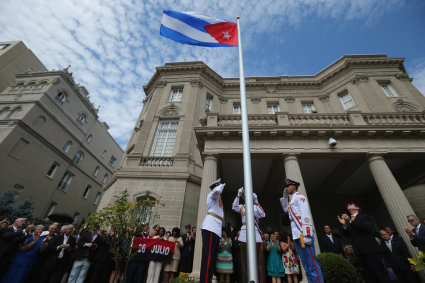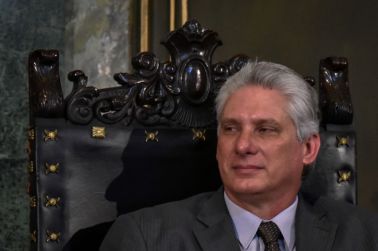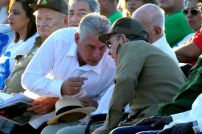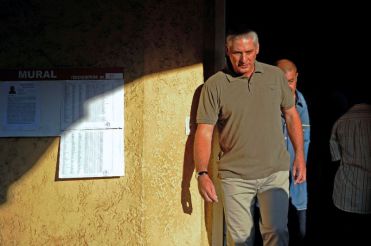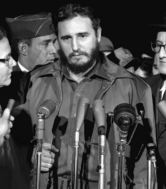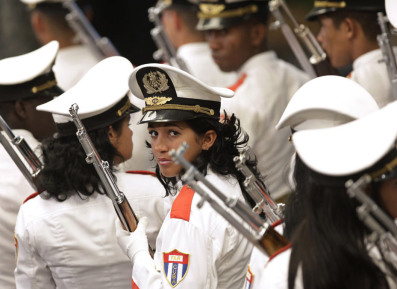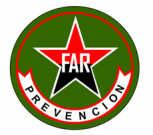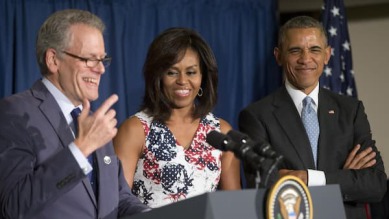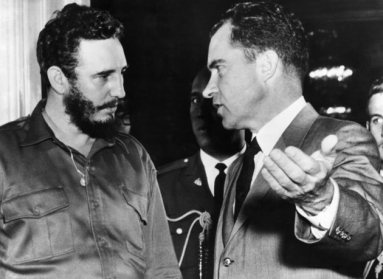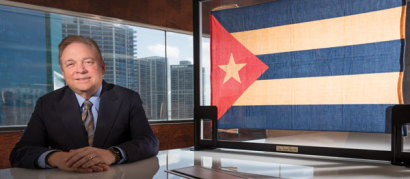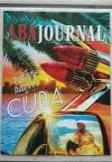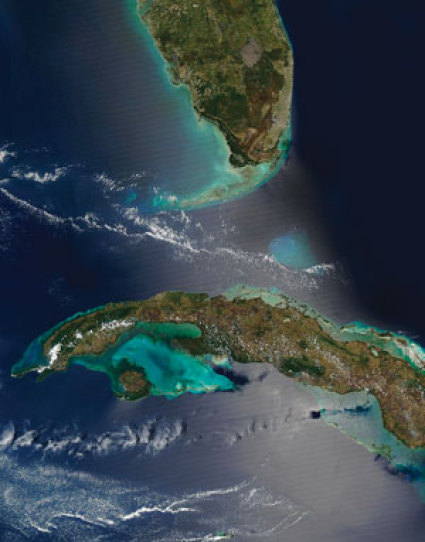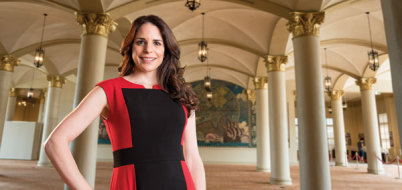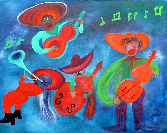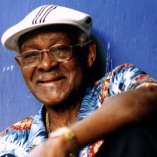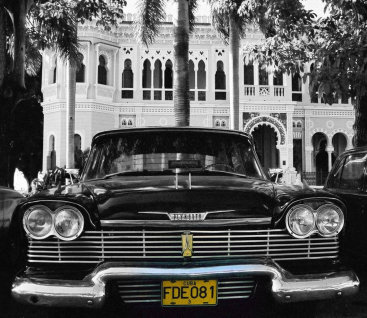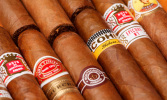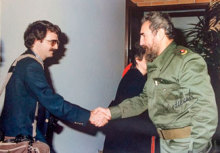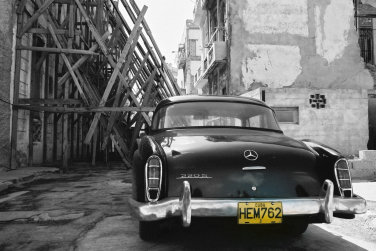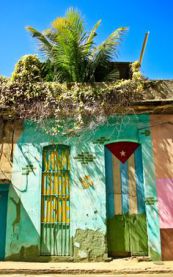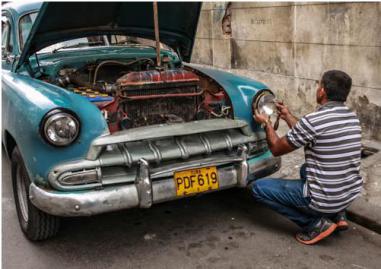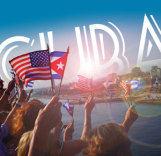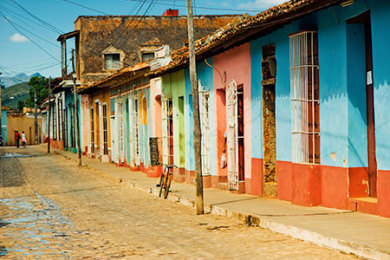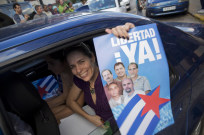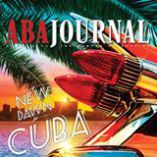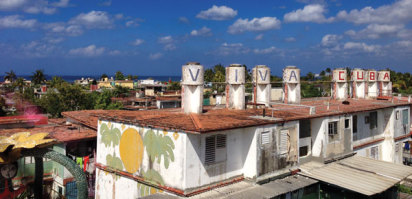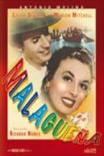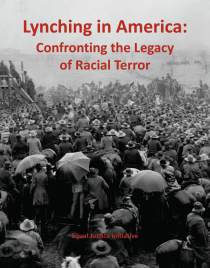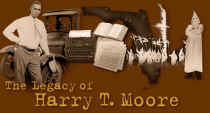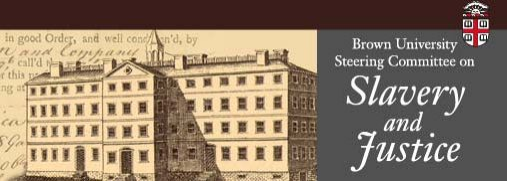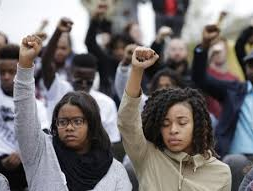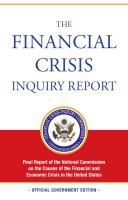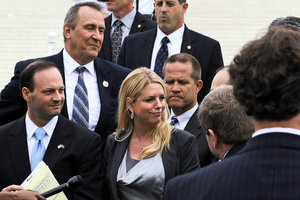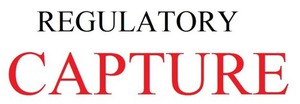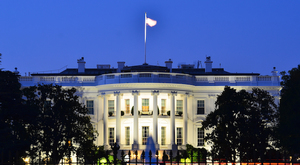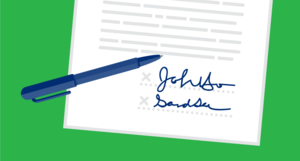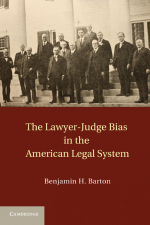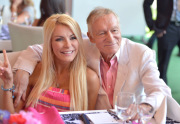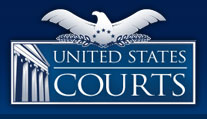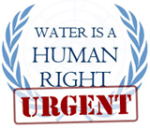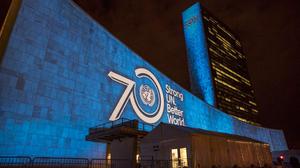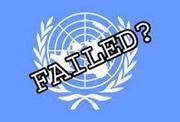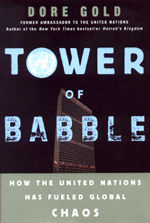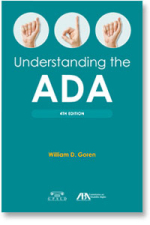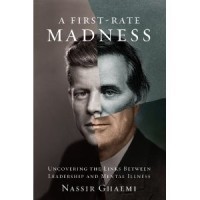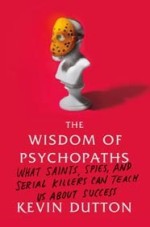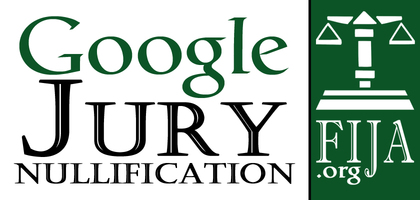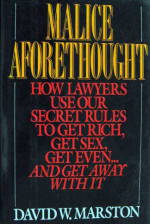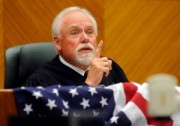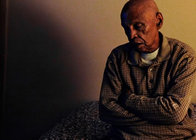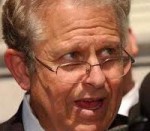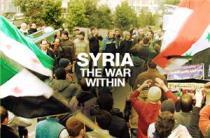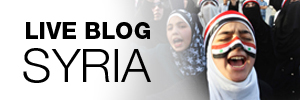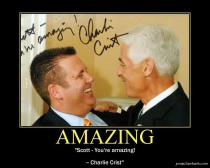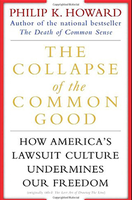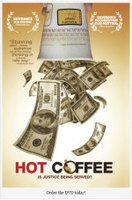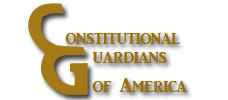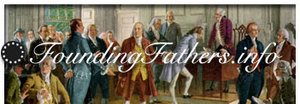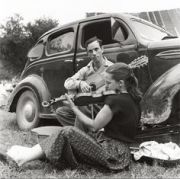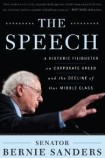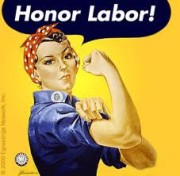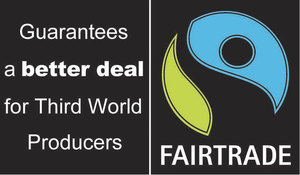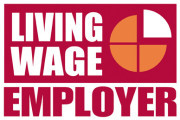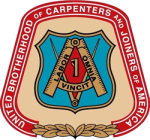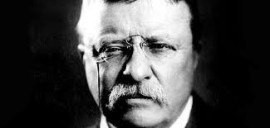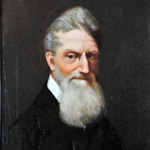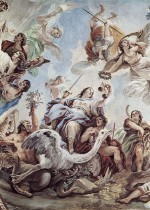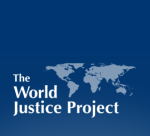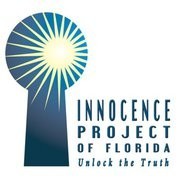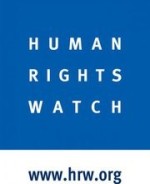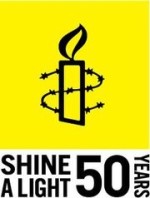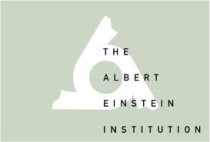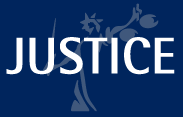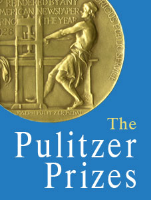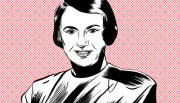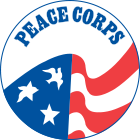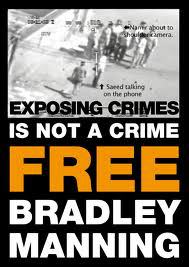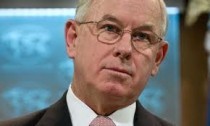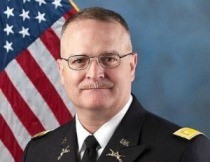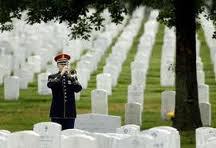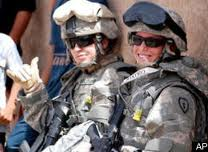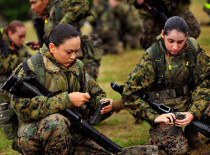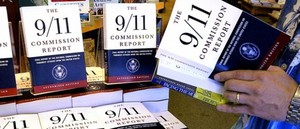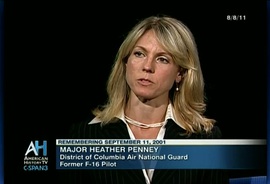Cuba. Officially the Republic of Cuba
Wikipedia
Cuba, officially the Republic of Cuba,
is a country comprising the island of Cuba as well as Isla de la Juventud and several minor archipelagos. Cuba is located in the northern Caribbean where the Caribbean Sea, the Gulf of Mexico, and the Atlantic Ocean meet. It is south of both the U.S. state of Florida and the Bahamas, west of Haiti, and north of Jamaica. Havana is the largest city and capital; other major cities include Santiago de Cuba and Camagüey. Cuba is the largest island in the Caribbean, with an area of 109,884 square kilometres (42,426 sq mi), and the second-most populous after Hispaniola, with over 11 million inhabitants.[14] Read more
Diaz-Canel tapped to steer Cuba through post-Castro uncertainty
Yahoo.com
April 18, 2018
Havana (AFP) - Cuba turns to a model Communist Party official, Miguel Diaz-Canel, to steer it through a period of uncertainty when it finally turns the page on the Castro era in a vote on Thursday.
The 57-year-old First Vice President is the pre-ordained choice of Raul Castro as he steps down, ensuring that the vote in the National Assembly to appoint him will be little more than a formality.
The successor to Fidel and Raul Castro has spent three decades climbing to the summit of the Communist Party. He is ideally placed to continue to implement the economic reforms initiated by his 86-year-old mentor.
He will be the first Cuban leader born after the 1959 revolution -- and perhaps crucially for some of the generals that will be under his command -- the first not to have fought in it.
"There is a tradition in Cuba of strong men at the head of the State," said Cuban watcher Arturo Lopez-Levy of the University of Texas-Rio Grande.
But "the profile of Miguel Diaz-Canel seems weaker," Lopez-Levy added.
"He has no more power than what he has been given."
In Havana's corridors of power, the jeans-wearing Diaz-Canel stands out, a self-declared fan of The Beatles with a passing resemblance to the actor Richard Gere.
He has advocated greater openness to the internet and a less restricted press.
His supporters say he knows how to listen and is a man of simple tastes. Read more
Lawyer Biography: Fidel Castro
Fidel Castro Short Biography
Lawyer Issues - Blog About Lawyers Legal Blog for Everyone
Fidel Castro has been the longest serving head of state in the world. This despite a concerted effort by the CIA and the United States Government to overthrow him or even assassinate him by what ever means available.
Fidel Castro was born on farm in Cuba on August 13, 1926. Fidel was born out of wedlock and his father, Angel Castro, did not officially claim him as his son. While growing up he went by the name of Fidel Ruz. Later, his father would marry his mother and Fidel would change his last name to Castro.
Castro attended Jesuit boarding schools. Fidel was smart, but wasn't a great student. He did excel in sports, however, especially baseball.
In 1945 Fidel Castro entered law school at the University of Havana. At University he became involved in politics and protesting against the current government. He thought the government was corrupt and there was too much involvement from the United States.
In 1952 Fidel Castro ran for a seat at Cuba's House of Representatives. However, that year General Fulgencio Batista overthrew the existing government and canceled the elections. Castro began to organize a revolution. Fidel and his brother, Raul, tried to take over the government, but were captured and sent to prison. He was released two years later.
Fidel Castro did not give up, however. He went to Mexico and planned his next revolution. There he met Che Guevara who would become an important leader in his revolution. Castro and Guevara returned with a small army to Cuba on December 2, 1956. They were quickly defeated again by Batista's army. However, this time Castro, Guevara, and Raul escaped into the hills. They began a guerrilla war against Batista. Over time they gathered many supporters and eventually overthrew Batista's government on January 1, 1959. In July of 1959 Castro took over as leader of Cuba. He would rule for nearly 50 years. Read more
Reflections on the Death of Fidel, truthdig by Steve Wasserman
Fidel Castro Wikipedia
Fidel Castro Spartacus Educational
Fidel Castro Encyclopedia Britannica
Cuban Revolutionary Armed Forces
Wikipedia
The Cuban Revolutionary Armed Forces (Spanish: Fuerzas Armadas Revolucionarias – FAR) consist of ground forces, naval forces, air and air defence forces, and other paramilitary bodies including the Territorial Troops Militia (Milicias de Tropas Territoriales – MTT), Youth Labor Army (Ejército Juvenil del Trabajo – EJT), and the Defense and Production Brigades (Brigadas de Producción y Defensa – BPD), plus the Civil Defense Organization (Defensa Civil de Cuba – DCC) and the National Reserves Institution (Instituto Nacional de las Reservas Estatales – INRE).
The armed forces has long been the most powerful institution in Cuba and high-ranking generals are believed to play crucial roles in all conceivable succession scenarios.[2] The military controls 60 percent of the economy through the management of hundreds of enterprises in key economic sectors.[3][4] The military is also Raúl Castro's base.[4] In numerous speeches, Raúl Castro has emphasized the military's role as a people's partner.[5]
From 1966 until the late 1980s, Soviet Government military assistance enabled Cuba to upgrade its military capabilities to number one in Latin America and project power abroad. The first Cuban military mission in Africa was established in Ghana in 1961. Cuba's military forces appeared in Algeria, in 1963, when a military medical brigade came over from Havana to support the regime.[6] Since the 1960s, Cuba sent military forces to African and Arab countries – Syria in 1973, Ethiopia in 1978, the Cuban intervention in Angola from 1975 to 1989, and Nicaragua and El Salvador during the 1980s. Read more
A new dawn for Cuba as it opens for business
ABA Journal
By Victor Li
Jun 01, 2016
The 90-mile corridor between Key West and the north coast of Cuba is far wider, deeper and considerably more dangerous when you factor in everything that's happened between the two countries during the last 57 years. Former ABA President Stephen Zack (with a flag from pre-revolutionary Cuba in his office) escaped from the island as a teenager two years after Fidel Castro seized power.
When Fidel Castro and his band of revolutionaries took control of Cuba in 1959, they established a Communist dictatorship antithetical to everything the U.S. represented—and aligned with America’s enemies. In 1961, a CIA-backed invasion by Cuban refugees to overthrow the Castro regime failed, almost from the moment it began, at the Bay of Pigs. The following year, the Cuban Missile Crisis nearly triggered World War III.
Former ABA President Stephen Zack had long expected the day would come when Cuba and the United States would finally break the Cold War-inspired status quo in place for more than half a century that has impoverished and isolated Cuba while creating a sworn enemy of America within 90 miles of its border. But like Godot saying he would be back any day now, Zack had expected a change for so long that he stopped expecting it.
The two countries haven’t had diplomatic relations since the Eisenhower administration, and a near-total embargo on American imports from and exports to Cuba has been in place since the early days of John F. Kennedy’s presidency. Meanwhile, the U.S. Department of State officially designated Cuba as a "state sponsor of terrorism" in 1982 for its history of supporting violent revolutionaries throughout the world. The designation functioned as a scarlet letter of sorts, as U.S. banks refused to lend money to domestic and foreign companies wishing to do business with countries on that list. Indeed, for most of the world, Cuba was forbidden territory.
Former ABA President Stephen Zack had long expected the day would come when Cuba and the United States would finally break the Cold War-inspired status quo in place for more than half a century that has impoverished and isolated Cuba while creating a sworn enemy of America within 90 miles of its border. But like Godot saying he would be back any day now, Zack had expected a change for so long that he stopped expecting it.
The two countries haven’t had diplomatic relations since the Eisenhower administration, and a near-total embargo on American imports from and exports to Cuba has been in place since the early days of John F. Kennedy’s presidency. Meanwhile, the U.S. Department of State officially designated Cuba as a "state sponsor of terrorism" in 1982 for its history of supporting violent revolutionaries throughout the world. The designation functioned as a scarlet letter of sorts, as U.S. banks refused to lend money to domestic and foreign companies wishing to do business with countries on that list. Indeed, for most of the world, Cuba was forbidden territory. Read more
Guantanamera
Wikipedia
"Guantanamera" (Spanish: "from Guantánamo, feminine" indicating a woman from Guantánamo[1]) is perhaps the best known Cuban song and that country's most noted patriotic song, especially when using a poem by the Cuban poet José Martí for the lyrics. In 1966, a version by American vocal group The Sandpipers, based on an arrangement by Pete Seeger, became an international hit. It has been recorded by many other solo artists, notably by Joan Baez, Jimmy Buffett, Celia Cruz, Bobby Darin, Joe Dassin, José Feliciano, Wyclef Jean, Puerto Plata, Trini Lopez, La Lupe, and Tito Puente, and by such groups as Buena Vista Social Club, the Gipsy Kings, and The Weavers. Read more
US Blocks Cuban Grammy nominees
BBC News
Friday, 6 February, 2004
US authorities have refused to let five Cuban Grammy Awards nominees travel to Sunday's ceremony in Los Angeles.
Musicians up for best tropical Latin album award - including veteran star Ibrahim Ferrer - have not got visas.
Ferrer, 77, told press in the capital Havana: "I am not a terrorist. I couldn't be one. I am a musician."
A US diplomat in Havana said the US administration could suspend the entry of people deemed to be "detrimental to the interest of the United States".
The US has imposed economic and travel sanctions on Cuba for 40 years - and President Bush has strengthened the country's policy against Cuba and cut back on cultural exchanges.
Cuban vice-Culture Minister Abel Acosta accused the US of making a political decision to please Cuban-American voters in Florida.
"How can these musicians be considered terrorists?" asked Mr Acosta, who is also head of the Cuban Music Institute.
"Something as noble as music is being converted into a policy against Cuba." Read more
A Sustainable Cuba
By Anel Quiroz, a student in
UAA’s Honors 192 course
on Limits to Growth
A small island in the Caribbean that people usually associate with an evil dictator is one of the most sustainable countries in the world. This little island is the island of Cuba where the people might not have it all, and they may dislike their ruler but they have a healthier environment than most third world countries or first world countries. The island of Cuba has achieved a goal that most successful countries are too developed to reach in a lifetime. Cuba has learned how to sustain its people to succeed even if that success is slow. Cuba is a role model for all underdeveloped and developed countries to follow.
As a young child I lived in Mexico, a country where most of the people don’t have riches and where people mostly live off the land. In the state of Veracruz, where my family is from, the people flourished by growing their own basic crops and other plants such as tomatoes, avocados, cilantro, fruits as well as other needed plants for a daily meal. I remember that we bought the rest of needed crops in the markets where the best fresh fruits and vegetables were available. Aside from growing their crops in small home gardens, some people are lucky and own small plots of land that they use not for building great expensive houses but for growing crops. One such person is my grandfather, Guillermo, who to this day in his old age grows coffee plants and sugar canes as well as oranges or limes and sometimes mangoes. He does not grow these crops for a source of food; he grows them to sell to the state which sends the food off to a distant land where the crops are sold for much more than what the worker is paid. Although I live far from my home state of Veracruz and I am now accustomed to the American ways of living. I still try to remember that there is a simpler much more sustainable way of life, where people grow their own fresh food and where life is much simpler.
Another Latin American country where people live a simple yet happy life is Cuba. This small
island was once on its way to a success then it was stopped in its tracks when the Soviet Union, its ally, crumbled to the
ground. Cuba no longer had any help; the oil embargo isolated it from rich countries. According to
Peters (2010), "prior to the collapse of the Soviet Union, Cuba’s
agricultural system was largely monocultural, highly mechanized, and dependent upon petrochemicals, oil, and machinery, similar to the present U.S. agricultural system" (p.231). Without the
Soviet Union, Cuba was all alone and no longer prospering like it once had, since it no longer had its hands on oil to produce products for the people to thrive. The people feared and suffered while
food and basic resources ran scarce making the government take action towards helping its people. Most importantly the people started helping themselves to live beyond the stage of crisis. The
problems Cubans faced had to do with food, energy, transportation
and the economy to name a few. This problem that had just started with a loss all soon developed into a problem with peak oil. The time in which this crisis occurred was called the special
period.
The way that the Cuban people began to get out of this crisis was by starting to farm their own food on any available land that was capable of growing crops. They did this to eat enough calories in their diets so that people would stop losing weight and so that people would find a way to help others who had no food at all. The people saw that if they did not start acting that they would soon die off from starvation or from other sanitation problems from the lack of proper electricity. According to Peters (2010), "independent of government action, Havañeros spontaneously began to plant food crops in the yards, patios, balconies, rooftops and vacant land sites near their homes"(p. 232). By planting food in whatever small area of land they could find it is obvious that the people were extremely desperate for food. This also shows that they were in no means ready for a crisis as such. With the history of political problems that Cuba has faced in the past, the people were only ready for political protests or other type of government related problems not unexpected food shortages. "In agriculture, organic fertilisers and pesticides, crop-rotation techniques and organic urban gardens were developed. Tractors were replaced with human and animal labour" (Yaffe, 2010, par. 13). All that the Cuban people needed was a kick-start to use things that they made within their country instead of using much more expensive things from others. Read more
Cuba Libre for All: US Removes Limits on Bringing in Cuban Rum, Cigars
The Associated Press
Michael Weissenstein
October 14, 2016
The Obama administration announced Friday it is eliminating a $100 limit on the value of Cuban rum and cigars that American travelers can bring back from the island.
The administration is also lifting limits on cargo ship travel between the U.S. and Cuba and easing U.S. and Cuban researchers' ability to conduct joint medical research. The measures are contained in a package of relatively small-scale regulatory changes meant to ease U.S. trade with Cuba.
Cuban rum and cigars will now be subject to the same duties as alcohol and tobacco from other countries, meaning most travelers will be able to bring back as many as 100 cigars and several bottles of rum. Because high-end Cuban cigars can sell for more than $100 apiece outside Cuba, every U.S. traveler can now legally bring back many thousands of dollars worth of Cuban products, potentially generating hundreds of millions of dollars in new annual revenue for the Cuban state.
The previous limit restricted travelers to a combined value of $100 in rum and cigars, although enforcement of the limit notably declined after President Barack Obama declared detente with Cuba in December 2014.
"Challenges remain — and very real differences between our governments persist on issues of democracy and human rights — but I believe that engagement is the best way to address those differences and make progress on behalf of our interests and values," Obama said in a statement announcing the changes.
Rum and cigar production is entirely government-run under Cuba's centrally planned communist economy.
More than 160,000 American travelers visited Cuba last year and that figure is expected to double this year. Hundreds of thousands of Cuban-Americans visit family on the island each year and will also be able to take advantage of the new measure, which comes a month and a half before the restart of commercial flights to Havana after more than 50 years.
The package of regulatory changes announced Friday also allows cargo ships to visit U.S. ports directly after docking in Cuba. They had been barred from U.S. ports for 180 days after visiting Cuba. Cuba blamed that measure for harming its ability to import and export and dampening hopes that a new military-run port in the city of Mariel could serve as a major link in the regional cargo shipping system. Read more
Backstory: ABA Journal freelance photographer recalls meeting Fidel Castro
ABA Journal Daily News
By Brenan Sharp
June 16, 2016
Longtime ABA Journal freelancer Tom Salyer has been taking photographs for our 101-year-old publication for roughly 25 years. If you enjoyed this month’s Cuba cover story, you have him to thank for the portraiture of seven of the attorneys quoted, including a compelling shot of former ABA president and Cuban-American Stephen Zack posed in his Miami office with his framed, prerevolutionary Cuban flag. This particular assignment, accompanied by the timing of the easement of the trade embargo, brought to light a unique recollection of Salyer’s brief brush with notoriety—an actual meet-and-greet with Fidel Castro.
As a young man, Salyer was a United Press International staff photographer. And in January of 1984, UPI had a nearly three-hour private interview with Castro in Havana.
"I found Fidel to be charismatic and thoroughly versed in world affairs," Salyer said. "He displayed his sharp sense of humor with a sly reference to President Ronald Reagan’s ‘friendship with that monkey,’ a nod to Bedtime For Bonzo, a 1951 film featuring the then-Hollywood star and a chimpanzee—which is actually an ape, not a monkey." Read more
Blocked by Cuban officials, planned Havana meeting of global bar group suddenly shifts to Miami
ABA Journal
By Martha Neil
May 23, 2016
Blasting legal groups in Cuba for their lack of support, an international bar group has notified members that a planned conference in Havana next month has been canceled and will instead be held in Miami. The annual meeting would have been the first held in Cuba since the group’s inauguration 75 years ago in Havana.
"The shift arises from the unilateral decision of the Cuban Organizing Committee (the National Association of Cuban Attorneys, the National Organization of Collective Law Offices, the Cuban Supreme Court, the Cuban Attorney General’s Office and the University of Havana Law School) to cancel the conference forty-five days from its scheduled date," says the announcement by the Inter-American Bar Association. "By reneging on their word, these organizations have completely disregarded the economic impact and reputational damage to our association."
The Daily Business Review (sub. req.) and the Wall Street Journal Law Blog have stories about the shift in location of the conference, which will still be held from June 20 to June 24. The American Bar Association is a member of the Inter-American Bar Association, Law Blog notes.
IABA President Carlos López said those in Cuba shut down the conference because they were worried about what speakers—particularly Luis Almagro Lemes, secretary general of the Organization of American States—would say about Cuba’s regime and its Venezuelan allies, the articles report.
The Cuban Embassy in Washington did not return calls from the Daily Business Review or Law Blog. Read more
In this month's cover story, the ABA Journal discusses renewed US-Cuban relations after the easement of the trade embargo and what that may mean for citizens of each country. This very timely piece contends with tourism, trade, new businesses, and, of course, Castro.
The story behind this month's cover design can be found here on our Instagram page.
Ernesto Lecuona
Wikipedia
Ernesto Lecuona y Casado August 6, 1895 – November 29, 1963) was a Cuban composer and pianist of worldwide fame. He composed over six hundred pieces, mostly in the Cuban vein, and was a pianist of exceptional skill.[1][2] His father was Canarian and his mother was Cuban. Read more
- Ernesto Lecuona 1895 -1963
- Ernesto Lecuona, The Gershwin of Cuba
Malaguena by Ernesto Lecuona Brassband 'De Bazuin' Oenkerk arranged and conducted by Klaas van der Woude
Malagueña (song)
Wikipedia
"Malagueña" is a song by Cuban composer Ernesto Lecuona; written in 1928 it was originally the sixth movement of Lecuona's Suite Andalucia, to which he added lyrics in Spanish. The song has since become a popular, jazz, marching band, and drum corps standard and has been provided with lyrics in several languages. In general terms Malagueñas are a Flamenco dance style from Málaga in the southeast Spain (see Malagueñas (flamenco style)). Read more

